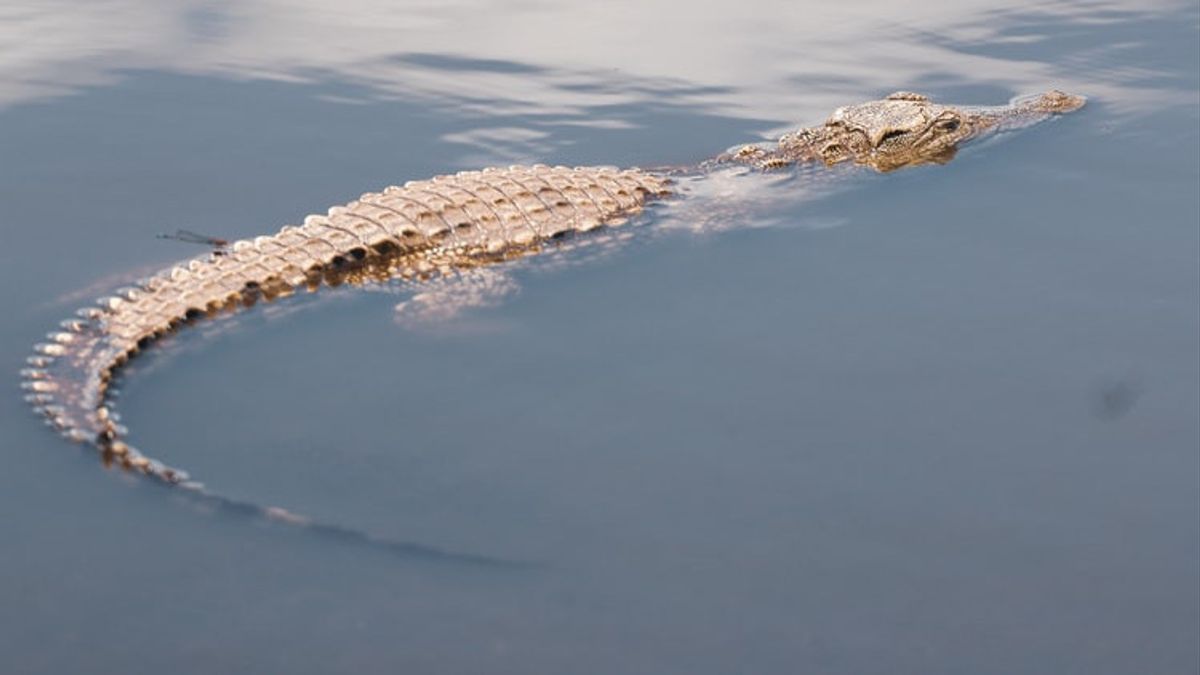JAKARTA - We know that small reptiles, such as lizards, geckos, or lizards have an extraordinary ability to break off and regrow their tails. This ability is used as a self-protection system in the wild. However, it turns out that these reptiles are not the only animals in the amniote family with the ability to regenerate appendages. Alligators also have that ability.
A group of scientists from Arizona State University and the Louisiana Department of Wildlife and Fisheries found that juvenile alligators also have the ability to regrow tails up to 9 inches or 18 percent of their total body length.
As noted in a new study in Scientific Reports, scientists are using advanced imaging techniques. The technique is combined with proven methods to study the anatomical organization and tissue of the alligator tail.
Through a combination of techniques and methods the researchers found that the regrown alligator's tail had a boneless central cartilage skeleton. It exhibits wound regeneration and repair features in the alligator's body system.
The American aligator tail (alligator mississippiensis) has proven potential to regrow. The X-ray image shows the bone as a white segmented structure and a less bright gray central cartilage structure.

"The regrown skeleton is surrounded by connective tissue and skin but lacks skeletal muscle (which the lizard's tail can regenerate with)," Kenro Kusumi, senior study co-author and professor and director of the ASU School of Life Sciences and associate dean at the College of Liberal Arts and Sciences, told CNN, quoted Wednesday, December 2.
Even a muscle-free regrown tail is essential for large predators, added Kusumi. The research team says that understanding these limitations could help in developing regenerative therapy in humans.
"We know that humans - incapable of regenerating - have the same cells and pathways that are used to regenerate in these other animals," Jeanne Wilson-Rawls, senior study co-author and associate professor at ASU's School of Life Sciences.
"If these enormous, long-legged animals had this ability, could we take advantage of this to help people who have lost limbs or burn victims who need skin regeneration?"
Kusumi was quick to add that the hope that perhaps humans could have abilities like alligators or other reptiles was not something that would happen tomorrow. But maybe it could happen at the end of this century.
The alligators are an ancient lineage of reptiles, which shared a common ancestor with birds some 245 million years ago, when non-avian dinosaurs dominated Earth. There is fossil evidence of an ancient alligator from the Jurassic period that also had a regenerating tail.
The discovery also raises the question of whether there were any fossils of dinosaurs out there, whose lineage goes to modern birds, with tails that can regrow.
"We haven't found any evidence so far in the published literature."
The research team noted that so far they have only been able to observe regeneration of the alligator tails. Given that the alligator is an endangered species, further study of how the alligator tail regeneration process works may be challenging, but it can provide some useful information.
The English, Chinese, Japanese, Arabic, and French versions are automatically generated by the AI. So there may still be inaccuracies in translating, please always see Indonesian as our main language. (system supported by DigitalSiber.id)













